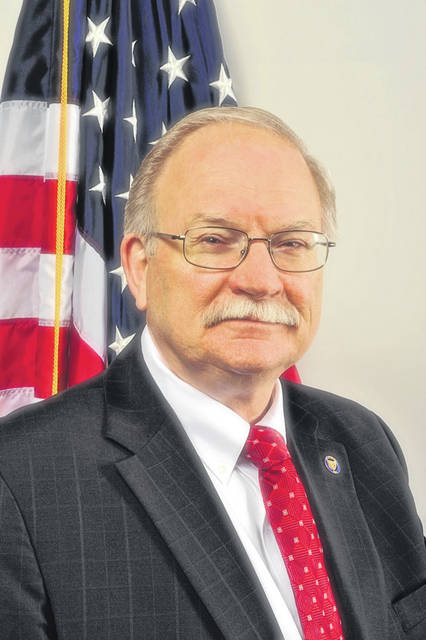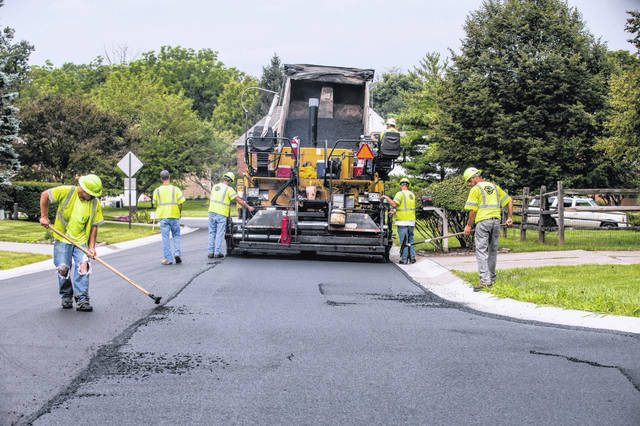

SIDNEY — “The only time you should ever look back is to see how far you’ve come!”
“I have no idea who should be credited with that quote, but am pleased that the Sidney Daily News annually provides the opportunity to reflect on the year just ended, and to look forward to the year ahead. On behalf of City Council, I gladly accept the challenge,” said Sidney Mayor Mike Barhorst.
“Biennially, Council members meet for a lengthy (generally all-day) planning session in which we establish goals for the next two years,” he said. “Because city council has elections every two years, nearly every election cycle there is at least one new member. As a result, the biennial practice provides the opportunity to look at the goals established by the previous council and either retain them, or move in a new direction.”
Barhorst’s report continues:
Inasmuch as the current biennium will end following the November election, I thought it might be a good opportunity to look at council’s current goals, and the progress that has been made on each of them. Council’s No. 1 goal has been to “Continue the development of the underground water source through the purchase of additional property and the establishment of additional wells.”
Although records are unclear as to when the search for an alternate source of water was first undertaken, it is clear that it has been an ongoing effort for more than six decades. Historically, most of Sidney’s water has been taken from the Great Miami River. That source is problematic for a number of reasons, not the least is the potential for a drought to impact the community’s livelihood.
In fact, the 1988 drought saw a rapid decline in the rate of flow of the river as well as ground-water and reservoir levels. Mandatory water-use restrictions were instituted, and Sidney came within three days of having to shut down all industrial customers.
An alternate water source was found and property was purchased in Washington Township. Wells were installed a pumping station and transmission line constructed that allowed the raw water to be pumped to the Water Treatment Plant atop Orbison Hill for treatment. We began using the new water source in October 2017.
This year saw the successful completion of the negotiated purchase of additional property from Barrett Paving. Late in the year, we closed on the property and additional wells will be installed, guaranteeing that the city of Sidney will have a reliable source of water for the next century and beyond.
Council’s second goal was to “Continue to pursue enhanced recreational opportunities through the development of recreational trails including the Great Miami River Trail and collaborating with the Shelby County Park District.”
During the past year, council collaborated with the Shelby County Historical Society on celebrating the 70th Anniversary of Tawawa Park, authorized the filing of ODNR Recreational Trails and Clean Ohio Trails grant program applications, and authorized the placement of a historic Zenas King Bridge in Tawawa Park. I also penned a guest editorial on the importance of Parks & Recreation programming, and will soon submit another on the importance of funding the Shelby County Park District.
Council’s third goal was “Focusing on downtown revitalization by marketing tax incentives for redevelopment of properties, transitioning The Ohio Building into private ownership, and supporting the efforts of Sidney Alive.”
With respect to the downtown, Council authorized wine consumption and possession during The Great Downtown Farmer’s Market, established a Downtown Revitalization District, put in place a special use agreement for downtown events, authorized a loan for façade improvements on one of the historic structures on the Court Square, and, participated in the Sidney Alive workshop on downtown revitalization that featured Bellefontaine developer Jason Duff.
We were also able to complete the asbestos survey and subsequently, remove the asbestos from The Ohio Building. In addition, a contract was awarded for the replacement of the building’s roof. We expect to transition the building into private hands once the roof work has been completed.
Council’s fourth goal was “Finding ways to revitalize neighborhoods, including the downtown, through concerted efforts with the Shelby County Land Reutilization Corporation and strengthening property maintenance codes for rental, vacant, and owner-occupied housing and commercial properties.”
Council has worked closely with the Shelby County Land Reutilization Corporation (Land Bank), developing cost-sharing arrangements for buildings whose demolition costs exceed the grant reimbursement limits. Council members have also considered waiving collection of utility fees on some properties so that the properties can be transitioned to new owners.
Thus far, 23 single family homes have been acquired, with 19 demolished, one scheduled for demolition, and three sold for rehabilitation. In addition, 12 doubles (24 units) were obtained, with nine of the doubles having been demolished and three are in process. Two, three-unit buildings were obtained and demolished as was one six unit structure (the former Miami Inn).
Council also authorized the Vacant Property Inspection program in April and adopted regulations in September. A Vacant Property Inspector was hired, and has begun working to encourage owners to transition buildings that are vacant (in some cases, for more than a decade) to a status where they are either occupied or to new owners for occupancy.
In addition, council adopted language to modify Section 1315.03 to give additional staff the ability to declare a building dangerous, renewed the annual sidewalk program for another 14 years, adopted revisions to the Downtown Community Reinvestment Area program and discussed available housing incentives, continued code enforcement and assessment of nuisance violations, authorized another CHIP Grant program application in collaboration with the Shelby County Commissioners, and adopted legislation that prohibits vehicle parking in front and side yards.
The next goal council adopted was to “Effectively communicate the need for permanent tax levy funding to provide for improved public safety services.”
As calls for emergency service continue to increase, Council has discussed the need for funding expanded fire and emergency services. In 2018, the Fire/EMS Annual Report revealed that total calls for service (Fire and EMS) again exceeded 4,000 calls (3,053 EMS and 1,013 Fire). Since 2010, the organization has seen a 33.14 percent increase in total call volume.
As a result, master planning for an additional fire station was undertaken to meet a community need that was first identified more than twenty years ago. An additional station will enhance the response times throughout the community, a topic I will address in a guest editorial in the coming weeks.
What turned out to be a companion goal was to “Effectively communicate the need for permanent tax levy funding to provide for an ongoing aggressive street maintenance program.”
The voters approved a five-year levy in November 2014 that provided a .25 percent earned income tax increase with the funds to be used solely for the repair of streets, roads, curbs, gutters and bridges within the city of Sidney. With the passage of that levy, 63 percent of our streets have been addressed. It is obvious that resurfacing the streets will be an ongoing need. As council discussed the need for a permanent levy, we looked at what it would take to continue maintenance of our roadway infrastructure.
Council ultimately authorized the selection of a firm to conduct polling concerning the dual street maintenance and fire and emergency service levy support. As a result of that polling, Council determined that a single levy that would provide support for both street maintenance and fire and emergency services would be placed before the voters in May 2019.
Council looks forward to the new year with eager anticipation of the challenges that we will face, with confidence in our ability to find solutions to those challenges. We are gratified to have a tremendously conscientious staff who can supply council with prudent options for whatever comes our way.



